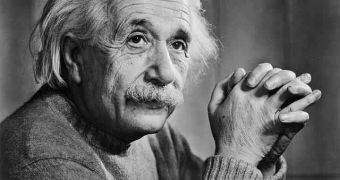Perhaps one of the most famous equations in the world, in all scientific fields, is Albert Einstein's theory of relativity, E=mc2. This means that the energy is equal to the mass multiplied by the square speed of light. Recently, an international team whose members come from Germany, France and Hungary, led by Laurent Lellouch from the Center for Theoretical Physics in France, managed to prove that the theory is actually right from a subatomic perspective.
The group used a lot of computational power provided by some of the mightiest supercomputers out there in order to prove that results based on proton and neutron (the particles that make up the atomic nuclei) behavior concur with the relativity theory. Practically, the standard model of quantum physics states that neutrons and protons are themselves made up of even smaller particles, called quarks, which are bound together by particles named gluons (glue-on, pretty logical).
So far so good, but here's where things get odd. Gluons have absolutely no mass, while the total mass of the quarks only represents 5% of the mass of the protons and neutrons. So, an explanation for the missing 95% of the mass had to be found. The experts discovered that the missing percentage of the mass derives from the energy resulting from the interactions and movements of the quarks and gluons.
This basically states that mass and energy are equivalent, just like Einstein's theory indicated, and, even more: mass can be transmuted into energy and vice versa. Extrapolating on the basis of this equation, it can be calculated how much energy is obtained while converting specific amounts of mass. Sadly, this was also used as a ground for building the atomic bomb.
"Until now, this has been a hypothesis," shared the National Center for Scientific Research (CNRS) in France in a press release, cited by Discovery. "It has now been corroborated for the first time."

 14 DAY TRIAL //
14 DAY TRIAL //